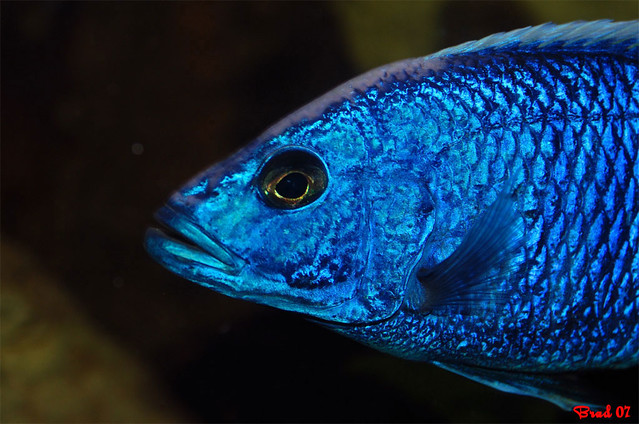 |
| Photo by Marcel Sigg |
Setting up an aquarium for an Electric Blue cichlid is simple, but takes thought and perhaps some research. It is important to try to replicate their natural environments to the best of your ability. Electric Blue cichlids are native to an African Rift Lake named Lake Malawi. In their natural habitat, they depend on their own instincts for their survival by hiding in rocks and logs, searching for smaller fish to eat.
In an aquarium, an Electric Blue cichlid totally relies on his owner for his survival and well-being. By providing for your fish, a home that closely resembles his native home, you will increase his lifespan, as well as cut down on aggressive behavior. You can also train your cichlid to eat prepared food rather than smaller fish in your aquarium. The other option is to keep your Electric Blue only with fish are as large, or larger, than they are. They will be safe from your cichlid's bite.
An Electric Blue cichlid can grow to be 6 inches in length, therefore should be put in a larger tank. A 55-gallon tank is the smallest tank you would want to house your Electric Blue cichlid in. They can live in murky water, but most hobby aquarists prefer to have their tanks clear. The fish do not mind clear water, either.
The water should be kept at temperature ranges of 72 to 82 degrees Fahrenheit. This is very important because having the incorrect water temperature is one reason why cichlids become aggressive. They are hardy fish, but any drastic change in water temperature could have detrimental effects. Keep the aquarium out of direct sunlight, and away from all heat sources to prevent sudden a rise or fall of water temperature.
Finally, an Electric Blue cichlid likes to have plenty of places he can hide, yet also have plenty of swimming space. Rocks and wood can be stacked strategically along the bottom of your tank to accomplish this. You will also want to replicate the substrate from Lake Malawi because these cichlids like to play in the substrate sometimes. Having the incorrect bottom layer in your aquarium can harm them unnecessarily.
|

